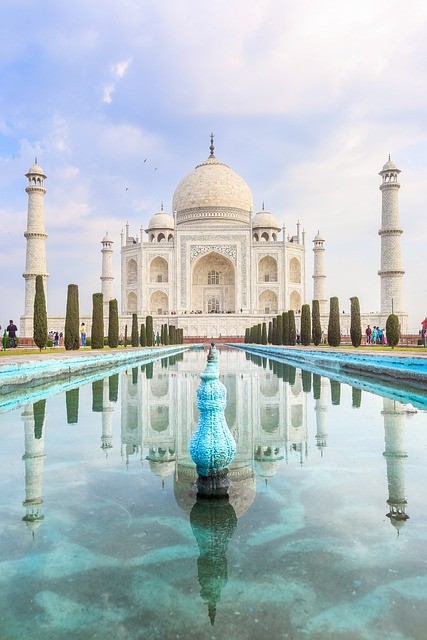The Taj Mahal, located in Agra, India, is one of the most iconic and renowned monuments in the world, celebrated for its stunning architecture and rich history. Here is an exploration of the history and architecture of the Taj Mahal:
History:
Construction Period (1631-1653 CE):
The Taj Mahal was commissioned by Mughal Emperor Shah Jahan in memory of his beloved wife, Mumtaz Mahal, who died during childbirth in 1631. The construction of the monument began soon after her death and continued for over two decades.
Mughal Dynasty:
The Mughal dynasty, known for its rich cultural and architectural contributions to India, played a significant role in the construction of the Taj Mahal. It reflects the Mughal architectural style, characterized by a blend of Persian, Indian, and Islamic elements.
Architectural Contributions:
The Taj Mahal’s construction involved the efforts of thousands of skilled artisans, including architects, craftsmen, and laborers, who worked under the guidance of chief architect Ustad Ahmad Lahori. The design is attributed to a Persian architect named Ustad Isa.
Symbol of Love:
The Taj Mahal is often referred to as the “Symbol of Love” due to its romantic origin story. It stands as an enduring testament to Shah Jahan’s love and devotion to Mumtaz Mahal.

UNESCO World Heritage Site:
The Taj Mahal was designated as a UNESCO World Heritage Site in 1983, recognizing its cultural and historical significance.
Architecture:
Design:
The Taj Mahal is an architectural masterpiece known for its symmetrical and harmonious design. It consists of a central white marble mausoleum, a large garden, and several smaller structures, all arranged symmetrically along a north-south axis.
White Marble:
The mausoleum is primarily constructed from white Makrana marble, which was quarried from Rajasthan. The use of marble gives the Taj Mahal its iconic white appearance and allows it to change color with the shifting sunlight throughout the day.
Dome and Minarets:
The central dome of the Taj Mahal is a prominent feature and is flanked by four elegant minarets, which serve both aesthetic and structural purposes. The dome’s finial is made of gold, adding to its grandeur.
Intricate Inlay Work:
The exterior of the Taj Mahal is adorned with intricate inlay work using semi-precious stones and exquisite floral and geometric designs. The use of precious and semi-precious stones adds to the monument’s beauty.
Gardens:
The large garden surrounding the mausoleum is divided into quadrants by intersecting pathways with fountains and reflecting pools. The garden is designed in the Persian Charbagh style, symbolizing paradise on Earth.
Calligraphy:
Inside the Taj Mahal, passages from the Quran are beautifully inscribed on the walls using intricate calligraphy. The calligraphy is a testament to the Islamic cultural influence on Mughal architecture.
Acoustic Phenomena:
The Taj Mahal also exhibits remarkable acoustic properties. It is said that echoes and reflections can be heard clearly in specific locations, enhancing the overall sensory experience.
The Taj Mahal stands as an enduring symbol of love, architectural brilliance, and Mughal heritage. It attracts millions of visitors from around the world who come to admire its beauty and learn about its rich history. The monument’s preservation and conservation efforts continue to ensure that it remains a marvel for generations to come.









